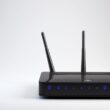Welcome to our comprehensive guide that will help you troubleshoot and solve the frustrating issue of your iPhone not staying connected to WiFi. We know how essential a stable WiFi connection is for your everyday activities, and we have compiled easy-to-follow solutions to ensure you stay connected in 2023.
In this section, we will walk you through the possible causes of iPhone WiFi connection issues and provide you with troubleshooting tips to fix the problem. Whether you are troubleshooting iPhone WiFi problems or looking for solutions for iPhone WiFi disconnection, we have got you covered.
Let’s dive in and learn how to fix “iPhone won’t stay connected to WiFi 2023”!
Understanding iPhone WiFi Connection Issues
In this section, we will explore the common causes of iPhone WiFi connection issues and how to troubleshoot them. We understand how frustrating it can be to experience WiFi problems on your iPhone, and we’re here to help.
Outdated Software
One of the primary reasons for WiFi connectivity issues on iPhones is outdated software. Make sure to check for software updates regularly by going to Settings > General > Software Update. Install any available updates to ensure your device has the latest bug fixes and security enhancements.
Network Interference
Another common issue that can lead to WiFi disconnection on iPhones is network interference. This happens when there are multiple devices connected to the same WiFi network, causing congestion and bandwidth issues. To troubleshoot this problem, try disconnecting other devices from the network or switching to a less crowded WiFi channel.
Incorrect Network Settings
Incorrect network settings can also cause WiFi connection issues on iPhones. Make sure to check that your network settings are correct by going to Settings > Wi-Fi and ensuring that the network you’re connected to is the correct one. You can also try resetting your network settings by going to Settings > General > Reset > Reset Network Settings.
Hardware Issues
Sometimes, WiFi disconnections on iPhones can be caused by hardware issues. Check that your device isn’t physically damaged or that the WiFi antenna isn’t blocked. You can also try resetting your network settings or performing a factory reset to troubleshoot any hardware-related issues.
Troubleshooting WiFi Disconnects on iPhone
In this section, we will guide you through the process of troubleshooting WiFi disconnects on your iPhone. We understand how frustrating it can be when your device won’t stay connected to WiFi. Here are some steps that you can take to fix WiFi issues on your iPhone:
Step 1: Reset Network Settings
If your iPhone is constantly disconnecting from WiFi, resetting your network settings might help. This will erase all your WiFi passwords, VPN, and APN settings, so make sure you have them handy before proceeding. To reset your network settings, go to Settings > General > Reset > Reset Network Settings.
Step 2: Update Software
Outdated software can cause WiFi issues on your iPhone. Make sure your device is up to date by going to Settings > General > Software Update. If there’s an update available, download and install it right away.
Step 3: Check Hardware
If there’s a hardware issue with your iPhone, it can cause WiFi disconnects. Check for any physical damage on your device or make sure that your SIM card is properly inserted. You can also try restarting your iPhone by holding down the power button.
Step 4: Seek Professional Assistance
If you have tried the previous steps and are still experiencing WiFi disconnections, it might be time to seek professional assistance. Visit an Apple Store or contact Apple Support for further help troubleshooting your iPhone’s WiFi connectivity.
By following these troubleshooting steps, you can fix WiFi issues on your iPhone and prevent it from constantly disconnecting from WiFi. Remember to update your software regularly and take care of the hardware to ensure the best WiFi experience on your device.
Optimizing WiFi Settings on iPhone
One of the most common reasons why an iPhone might not stay connected to WiFi is due to poor WiFi settings. Here are our top tips to help you maintain a stable WiFi connection on your iPhone:
Enable Auto-Join Networks
The first step is to ensure that your iPhone is set to auto-join WiFi networks. To do this, go to Settings > WiFi > Auto-Join Networks and toggle the switch to on. This will automatically connect your iPhone to known WiFi networks when in range, so you don’t have to manually join every time.
Reset Network Settings
If you are still experiencing issues, resetting your network settings may help. To do this, go to Settings > General > Reset > Reset Network Settings. Keep in mind that this will erase all stored WiFi passwords and other network-related settings, so you will need to re-enter them.
Update Your Device Software
Keeping your device up to date is crucial for optimizing WiFi performance. To check if there are any updates available, go to Settings > General > Software Update. If there are any updates available, download and install them. This can resolve underlying issues that may be contributing to your WiFi problems.
Ensure Your Router is Up to Date
Another important factor to consider is the age of your router. If you have an older router, it may not be able to support the latest WiFi standards, leading to poor performance. Check your router’s documentation to ensure it is up to date with the latest firmware and settings.
By implementing these tips, you can improve your iPhone’s WiFi connectivity and ensure a stable connection. Remember, maintaining optimal WiFi settings is crucial for uninterrupted internet access on your device.
Managing Network Interference
If you are experiencing WiFi disconnects on your iPhone, network interference could be the culprit. Network interference can be caused by a variety of factors, such as competing networks or physical obstructions. Here are some steps you can take to manage network interference:
1. Change WiFi Channels
Switching to a different WiFi channel can help reduce interference from other networks in the area. To do this:
- Open your router settings by typing your router’s IP address into your web browser.
- Locate the wireless or WiFi settings.
- Look for an option to change the WiFi channel and select a different one.
- Save the changes and restart your router.
2. Reset Your Router
Resetting your router can help eliminate any technical issues that may be causing network interference. Here’s how:
- Unplug your router from the power source.
- Wait for 30 seconds.
- Plug your router back in and wait for it to restart.
3. Address Physical Obstructions
Physical obstructions can interfere with your WiFi signal, causing disconnections on your iPhone. Try the following:
- Move your router to a more central location in your home.
- Ensure there are no large objects or appliances between your iPhone and the router.
- Use WiFi extenders or boosters to increase the range and strength of your WiFi signal.
By managing network interference, you can reduce the likelihood of WiFi disconnects on your iPhone. Try these solutions to enjoy uninterrupted internet access.
Addressing Hardware Issues
If all previous troubleshooting steps have failed to fix your iPhone’s WiFi issues, it’s possible that hardware issues are causing the problem. In this situation, it’s crucial to take specific steps to address the root cause of the issue.
Step 1: Check for Physical Damage
The first thing you should do is check your device for any physical damage that may be affecting its WiFi connectivity. Look for any cracks, scratches, or other signs of damage that may be disrupting your iPhone’s ability to connect to WiFi. If you find any damage, take your device to a professional for repair.
Step 2: Reset Network Settings
If your device shows no signs of physical damage, try resetting your network settings. This will erase any saved WiFi passwords and network settings, giving your device a fresh start. To do this, go to Settings > General > Reset > Reset Network Settings. Then, reconnect to your WiFi network and see if the issue persists.
Step 3: Seek Professional Assistance
If all other troubleshooting steps have failed, it’s possible that a hardware malfunction is causing your device’s WiFi issues. In this case, seeking professional assistance may be necessary. Contact Apple Support or take your device to a licensed repair technician for further assistance.
By following these steps, you can identify and address any hardware issues that may be causing your iPhone’s WiFi disconnection problems. Remember to always prioritize the safety and security of your device, and seek professional help if needed.
Advanced Solutions for Persistent WiFi Disconnections
If you have tried the previous solutions but are still experiencing persistent issues with your iPhone’s WiFi connectivity, don’t worry – we have more advanced solutions to help. These steps require a bit more technical knowledge and may take more time to complete, but they can often resolve even the most stubborn WiFi disconnection issues.
Reset All Settings
Resetting all settings on your iPhone can help eliminate any software misconfigurations that could be causing your WiFi connectivity issues. Keep in mind that this will erase all custom settings and preferences, such as wallpaper and passcodes, so make sure to back up your device before proceeding.
- Go to “Settings” on your iPhone.
- Select “General.”
- Select “Reset.”
- Select “Reset All Settings.”
- Enter your passcode if prompted.
- Confirm the reset by selecting “Reset All Settings.”
Restore Your Device
If resetting all settings doesn’t work, restoring your iPhone to its factory settings can often resolve persistent WiFi disconnections. Make sure to back up your device before restoring, as this will erase all data and settings on your iPhone.
- Connect your iPhone to your computer and open iTunes.
- Select your device on the iTunes screen.
- Select “Restore iPhone” and confirm the action.
- Wait for the restore process to complete, which may take some time.
- Follow the onscreen prompts to set up your iPhone as new or restore from a backup.
Contact Apple Support
If you’ve tried all of these troubleshooting steps and are still experiencing issues with your iPhone’s WiFi connection, it may be time to contact Apple Support for further assistance. They can help diagnose any hardware issues that may be causing the problem and provide solutions to get your WiFi connection back to normal.
- Visit the Apple Support website to schedule a call or chat with a support representative.
- Visit an Apple Store in person to speak with a specialist.
- Contact Apple’s support hotline for further assistance.
We hope these advanced solutions help you resolve any persistent issues with your iPhone’s WiFi connectivity. By following these steps, you can ensure that your device stays connected to WiFi for uninterrupted internet access.
Final Thoughts
We hope this guide has been helpful in resolving the frustrating issue of your iPhone not staying connected to WiFi. Maintaining a stable WiFi connection is crucial for seamless usage in 2023, and we understand how important it is for your daily activities.
Remember to always keep your software up to date and optimize your WiFi settings for the best experience. By following the steps outlined in this guide, you can resolve the “iPhone won’t stay connected to WiFi” issue and enjoy uninterrupted internet access on your device.
Next Steps
If you have tried all the solutions in this guide and are still experiencing persistent WiFi disconnections, we recommend reaching out to Apple Support for further assistance. They will be able to provide you with advanced solutions or repair options, if needed.
Thank you for choosing our guide to troubleshoot your iPhone’s WiFi connection issues. If you have any feedback or suggestions, we would love to hear them.
Here’s to a stable and reliable WiFi connection on your iPhone!
FAQ
How do I fix my iPhone when it won’t stay connected to WiFi?
To fix this issue, you can try resetting your network settings, updating your software, or checking for hardware issues. For detailed steps, please refer to the troubleshooting section in this guide.
What could be causing my iPhone to have WiFi connection issues?
Common causes of WiFi connection issues on iPhones include outdated software, network interference, or incorrect network settings. It’s important to understand these possible causes before attempting to fix the problem.
How can I troubleshoot WiFi disconnects on my iPhone?
If your iPhone keeps disconnecting from WiFi, you can troubleshoot the issue by resetting network settings, updating software, and checking for hardware issues. We have provided detailed steps in the troubleshooting section of this guide.
How can I optimize WiFi settings on my iPhone to prevent disconnections?
To maintain a stable WiFi connection on your iPhone, you can optimize its WiFi settings by enabling auto-join networks, resetting network settings, and ensuring your device is up to date. These tips and tricks can help prevent constant disconnections.
How can I manage network interference that causes WiFi disconnects on my iPhone?
To address network interference, you can change WiFi channels, reset your router, or remove physical obstructions that may affect your iPhone’s WiFi connection. These strategies can help manage interference and prevent disconnections.
What should I do if there are hardware issues affecting my iPhone’s WiFi?
If you suspect hardware issues with your iPhone’s WiFi, you can troubleshoot them by checking for physical damage, resetting network settings, or seeking professional assistance. These steps can help address any hardware-related problems.
What advanced solutions are available if I still experience persistent WiFi disconnections on my iPhone?
If previous solutions haven’t resolved the issue, you can try resetting all settings, restoring your device, or contacting Apple Support for further assistance. These advanced solutions may help with persistent WiFi disconnections.
How can I ensure a stable WiFi connection on my iPhone in 2023?
By following the steps outlined in this guide, you can resolve the “iPhone won’t stay connected to WiFi” issue and maintain a stable WiFi connection on your device. Keep your software up to date and optimize your WiFi settings for the best experience.



